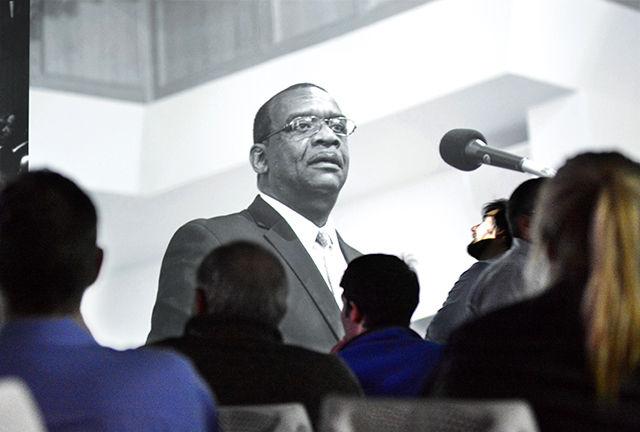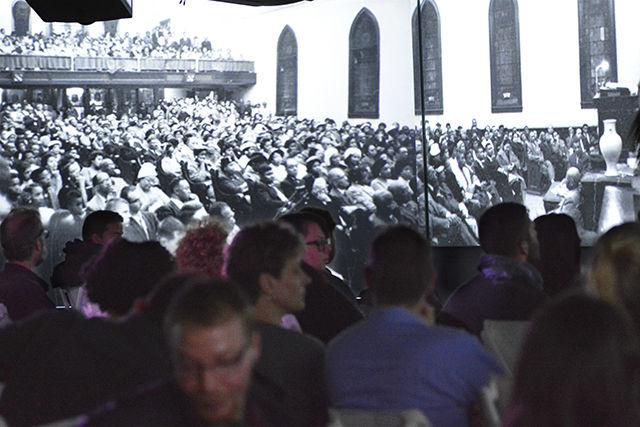Phase two of the Virtual MLK project was showcased Monday night to more than 50 NC State students and staff members in the virtualization lab in Hunt Library.
The multi-phase project, conducted by members of NC State’s communication department, is aimed at creating an immersive experience that will place audience members in a multimedia representation of Martin Luther King’s “Fill Up the Jails” speech, which originally took place on Feb. 16, 1960 at the White Rock Baptist Church located in Durham.
The speech, which was a response to the 1960 Greensboro sit-ins, represents the first time that King told civil rights activists to participate in creative protests as a means for achieving civil rights.
“The idea behind this project is recreating a space in a digital way to make for an experience that would otherwise escape us,” said Victoria Gallagher, a professor and associate dean for the college of humanities and social sciences.
Gallagher and her team have created this project to allow the audience to experience public speaking in a new way.
“Public speaking is so ephemeral. It moves us and it transforms us, but it’s here and gone,” Gallagher said. “We asked ourselves, how can we recapture this speech when there is no audio recording and when the place it was originally given is gone. Our idea was to create an immersive digital recreation.”
In June of 2014, Gallagher and her team hired an audio actor to re-enact King’s “Fill Up the Jails” speech at the White Rock Baptist Church, which has been rebuilt since the original speech was given. Justin Drust, a local audio designer and recordist set up microphones around the sanctuary to not only capture the audio actor’s voice, but the voices and movements of members of the audience.
“We knew we wanted to capture the experience in the church of the actual speech, and we also knew we wanted multiple perspectives,” Drust said. “We did a multi-track recording setup and had microphones placed by the podium, in the middle of the crowd to get some of the responses and reactions to the speech, as well as in the balcony and other odd places around the church.”
By doing this, Drust was able to capture the sounds of the atmosphere in the church, which gives the audience a better perspective as to what it would have been like to be there in real time.
Two five-minute clips were showcased to the audience Monday night. Members of the audience were encouraged to move around the room so that they could experience the sounds of the speech from these different perspectives.
Nicholas Sorensen, a sophomore studying history, said he was impressed by how the project members were able create a space where the sound perspective would change depending on your placement in the room.
“I think this project is a great interactive experience for students who want to gain knowledge about this civil rights movement and communication technology,” Sorensen said.
Gallagher hopes that this project will also serve as a learning tool to students in NC State’s communication program.
“We envision this being used in a lot of different ways,” Gallagher said. “We are obviously using it for research, but we also want to use it in classrooms and to use it to study and understand the impact of public addresses.”
Phase three of this project is expected to be finished within the next year and a half, according to Gallagher. It will include digital recreations of the interior and exterior of the original White Rock Baptist Church.
“We want it to be like you are walking into the original sanctuary,” Gallagher said.
More than 50 students and staff members attended the Fill up the Jails virtual MLK speech. “The idea behind this project is recreating a space in a digital way to make for an experience that would otherwise escape us,” Victoria Gallagher said. Such new experiences involve the immersion of the audience within the speech itself.









